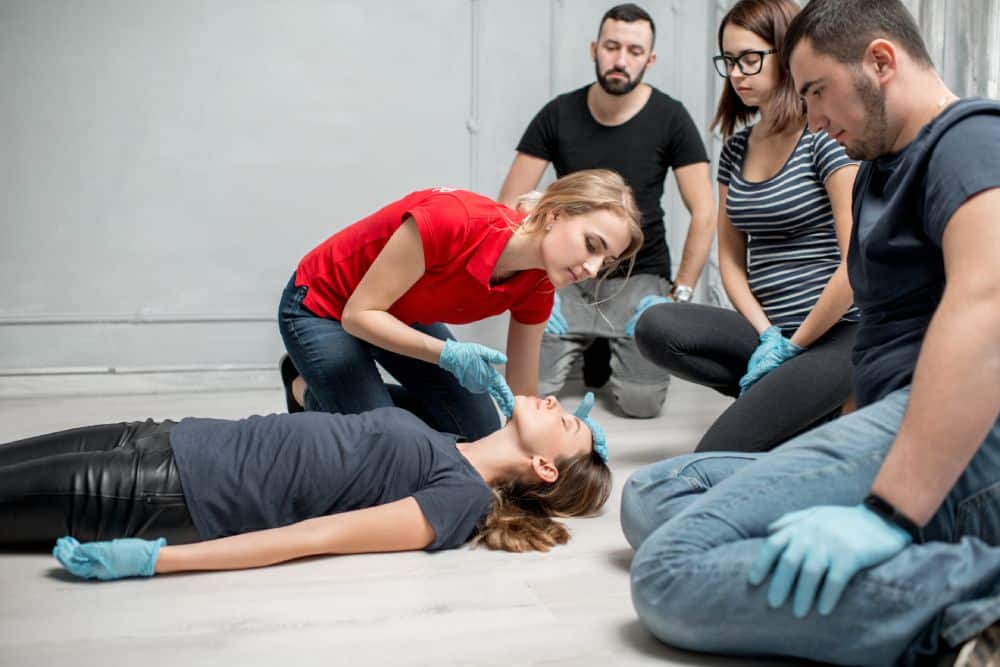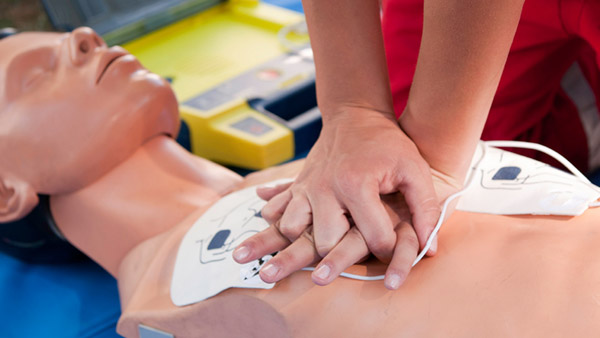Introduction

In today's globe, emergency situations can strike anytime, and being prepared is vital. Among the essential skills that can save lives is cardiopulmonary resuscitation (CPR). Young adults stand for an important populace that can be educated to react successfully in emergency situations. By equipping them with CPR training, we not only equip them with life-saving skills however likewise promote a society of preparedness and obligation. This write-up checks out the value of CPR training for teenagers, what to anticipate in emergency treatment programs, and exactly how these skills contribute to their personal advancement and area safety.
Understanding CPR Training for Teenagers: Preparing the Future Generation for Emergencies
What is CPR?
Cardiopulmonary resuscitation (CPR) is a lifesaving strategy utilized throughout emergency situations when somebody's heart beat or breathing has actually quit. It contains upper body compressions and rescue breaths that aid preserve blood circulation to crucial body organs until professional medical aid gets here. Comprehending the basics of CPR is important for teenagers who may discover themselves in emergency situations.
Why Do Teenagers Need Mouth-to-mouth Resuscitation Training?
Teens are typically at celebrations, sports occasions, or even home events where emergencies may happen. By learning mouth-to-mouth resuscitation, they become proactive participants of their community who can act decisively during situations. The capacity to do CPR confidently can turn a potentially heartbreaking scenario into one where lives are saved.
Benefits of Emergency treatment Courses for Teens
First aid training courses do greater than simply teach individuals exactly how to supply instant treatment; they instill self-confidence and enhance analytical abilities. For teenagers, this experience can construct character and motivate leadership qualities.
- Empowerment: Knowledge of emergency treatment and CPR equips young people. Confidence Building: Successfully completing a course supplies teens with a feeling of achievement. Community Solution: Educated teenagers can offer in various settings such as institutions or sports teams.
The Structure of mouth-to-mouth resuscitation Courses for Teens
Course Period and Format
Most first aid programs are made to fit within a few hours to a number of days, depending upon the deepness of training supplied. Usually, a fundamental emergency treatment course will cover:
- Theory: The concepts behind first aid techniques. Practical Skills: Hands-on experiment mannequins or via simulations.
Key Parts Covered in Emergency Treatment Courses
Understanding Emergency Situations- Recognizing when to require help Assessing the scene for safety
- Performing top notch breast compressions Providing rescue breaths correctly
- Learning just how to run an AED Importance of very early defibrillation
- Techniques for adults, kids, and infants Recognizing indicators of airway obstruction
- Cuts and scrapes Sprains and fractures
The Value of Accreditation in First Aid Training
Obtaining Your Emergency treatment Certificate
Completing a first aid course generally finishes in receiving a qualification that validates your abilities. This certificate serves multiple purposes:
- It demonstrates capability in emergency response. Many organizations require qualification for participation in certain events.
Keeping Certifications Current
Just like any type of life skill, it is necessary to keep your understanding up-to-date. A lot of organizations suggest renewing certifications every 2 years.
How Teens Can Obtain Included with First Aid Training
Finding Neighborhood Emergency treatment Courses
Teenagers thinking about gaining their emergency treatment certificate need to check out local community centers, schools, or wellness companies that offer certified programs.
Helpful Resources:
- American Red Cross St John Ambulance Local medical facilities or health departments
Online vs In-Person Training Options
With improvements in technology, on-line components have become popular yet may do not have hands-on method vital for absolutely grasping strategies. A blended method-- combining on-line concept with sensible sessions-- might be most beneficial.
Creating Awareness Among Peers regarding Mouth-to-mouth Resuscitation Training for Teens: Preparing the Future Generation for Emergencies
Peer Education and learning Initiatives
Encouraging teens to share what they've found out with their close friends can intensify the impact of training programs:
- Forming study groups focused on emergency situation preparedness. Hosting workshops at schools or community centers.
Using Social Media as a Platform
Teens today are greatly engaged on social networks systems; making use of these networks can help spread recognition concerning the value of emergency treatment training amongst peers.

Real-Life Stories That Highlight the Relevance of CPR Educating for Teens
Case Research 1: Conserving a Life at School Sports Event
A teen trained in CPR was able to conserve their good friend's life throughout a football suit when he fell down on the field due to heart attack. Their quick reasoning enabled them to carry out correct breast compressions until emergency solutions arrived.
Case Study 2: Family Emergency Situation at Home
Another instance entailed siblings who had actually taken a first aid course with each other. When their younger brother unintentionally choked on food during dinner, they promptly knew what actions to take since they remembered their training-- leading them successfully through the emergency.
Frequently Asked Questions (FAQs) About Teenager CPR Training
1. What age should teens begin taking CPR courses?
Most companies recommend starting as early as 12 years old; nonetheless, more youthful youngsters can additionally find out basic principles through appropriate programs tailored to their age group.
2. The length of time does it take to finish a first aid course?
Training courses commonly vary from 4 hours as nearby first aid training Hobart much as 16 hours depending upon web content depth-- the average being around 8 hours.
3. Exist any prerequisites prior to enrolling?
No formal requirements exist; nevertheless, it's practical if individuals have an understanding of basic clinical terms.
4. Will certainly I obtain certification after finishing my course?
Yes! Upon effective completion and passing any kind of required analyses you'll receive an official emergency treatment certificate valid for 2 years.
5. Can I take these programs online?
Numerous organizations offer hybrid formats combining on the internet theory with called for functional sessions held in individual-- this is advised by industry standards.
6. Is it needed to renew my certification periodically?
Yes! Regular recertification ensures your abilities continue to be proficient and updated according to present guidelines.

Conclusion
In conclusion, furnishing young adults with understanding regarding cardiopulmonary resuscitation (CPR) through specialized training programs is indispensable not only for their growth but also boosts neighborhood safety and security in general. With efficient training resources offered-- from neighborhood programs supplying detailed instruction on both fundamental emergency treatment strategies as well as sophisticated life assistance methods-- it's simpler than in the past for young people eager regarding making an impactful distinction during emergencies!
As we progress into an unforeseeable globe loaded with difficulties needing quick activity-- allow us invest our initiatives towards enlightening this next generation so they're prepared not simply academically yet likewise practically geared up when encountered against real-life situations demanding immediate feedbacks like those needing prompt treatments such as carrying out reliable cardiopulmonary resuscitation (MOUTH-TO-MOUTH RESUSCITATION).